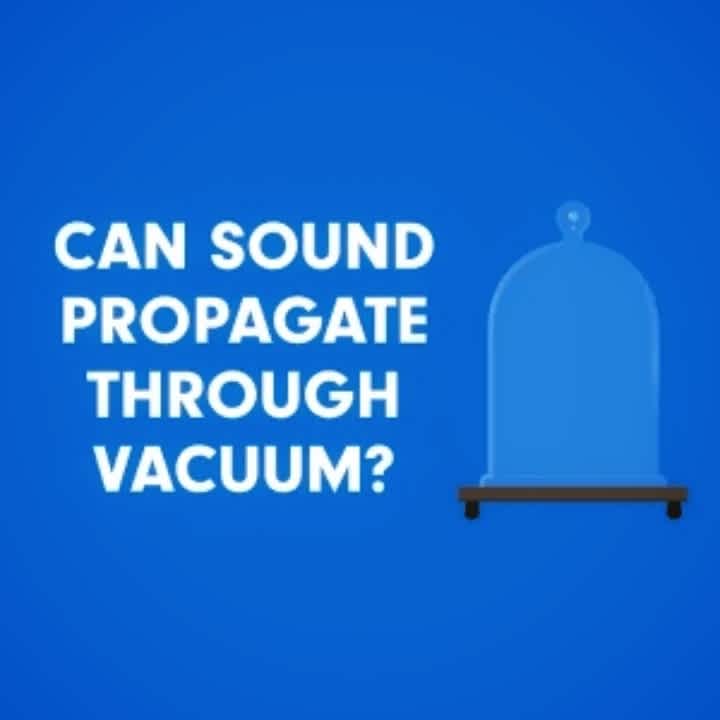Sound plays an important role in our daily lives. It helps us to communicate with each other. We can not imagine our lives without sound. There are a wide variety of sounds in our surroundings that can be heard. Every object that is in motion produces sound. Sound needs a material medium to travel and there can be different mediums for sound to travel.
But this blog deals with the vacuum as a sound medium. Can sound propagate through a vacuum? No, sound cannot propagate through a vacuum. Let’s find out why? And also you can learn here about the propagation of sound and the speed of sound in different mediums.
why so quiet meme
What is sound?
A sound is a form of energy that produces hearing sensations in our ears. Something that can be heard is sound. Sound is generally evaluated as vibrating particles of an object. When an object moves, it means that the particles of that object are moving which results in the movement of surrounding air molecules. The vibrations from those molecules then bump into other molecules of an object close to them. The vibrating molecules cause surrounding molecules to vibrate as well. Sound creates a pressure wave through the vibrations and hence sound acts as a wave. The human ear detects sound waves when vibrating air molecules vibrate the small parts within the ear.
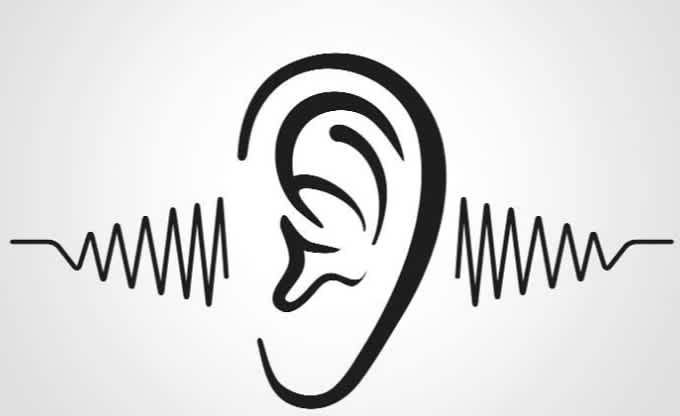
sound acts as a wave
There are multiple kinds of sound waves:
Longitudinal waves
Pressure waves
Mechanical waves
Since sound is a wave, it has almost all the properties of a wave.
Different ways by which we can generate sound:
Sound is produced by the mechanical vibrations of particles or bodies which travel as a wave. The sound waves or vibrating particles reach the eardrums of our ears and force the particles adjacent to them to vibrate. In this way, sound vibrations make the eardrum vibrate and we can hear.
For example:-
When we pluck a guitar string, it vibrates and produces sound.
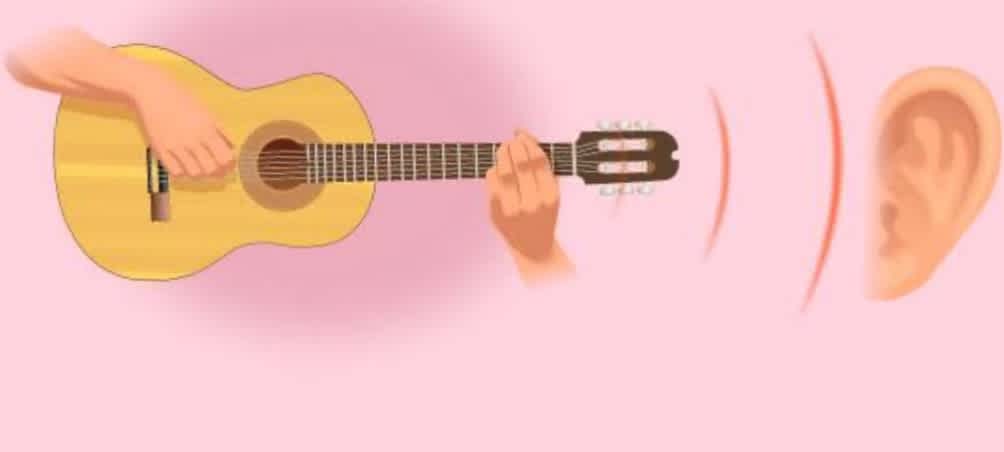
The sound produced by the guitar strings
2. When we hit the drum's membrane, it vibrates and produces sound.
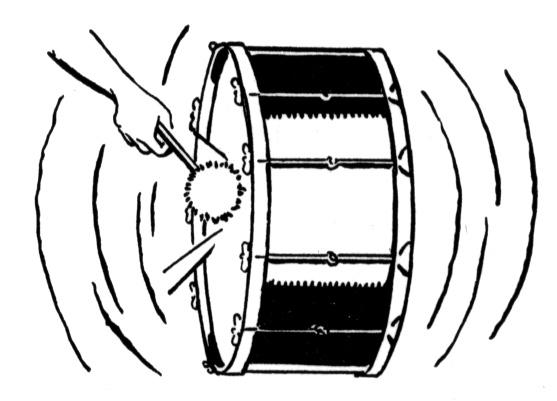
The sound produced by the drum membrane
The vibrations produced by different objects are different and therefore the sound.
Propagation of Sound:
The traveling of sound waves is known as propagation. Now the question is how does sound travel? Sound is propagated through to and fro motion of particles of the object. Vibrations of one object cause the particles of another object to vibrate. Sound travels as longitudinal waves through a material medium. Sound is all about the disturbance propagated by collisions between the particles. One hitting the next, and so forth.
In sound propagation, it is the energy of the sound that travels but not the particles of the medium. Generally, sound propagates through a material medium which can be solid, liquid, or gas.
During sound propagation, sound waves can be reflected, refracted, or attenuated (weakened) by the medium. It depends upon the medium and its density as the propagation of the sound can be different for different mediums.
Medium of propagation of sound:
The medium here refers to a material that can carry a wave. The medium is not the wave or it doesn’t make a wave. But, it transports the wave from its source to other sites. The particles in the medium get disturbed and they continue to pass on the disturbance to further particles as explained above.
The three types of medium are:-
Solid
Liquid
Gas
Sound travels differently through different types of mediums.
Perform this activity to understand it clearly.
Step 1: Take an empty container and hit it once or twice with any rod (object). Observe the sound produced.
Step 2: Now, add water to the container and hit it once again. The sound produced at this time will be different from the earlier one.
So, this activity clearly shows that the sound travels differently through different mediums depending on what it is traveling through.
From the three mediums(solid, liquid, or gas), sound waves travel the slowest through gases, faster through liquids, and fastest through solids. Air is the most common medium through which sound travels. Sound needs a material medium to travel because the molecules of the medium carry the sound waves from one point to another. The movement caused by the vibrations of the particles are carried further to the particles ahead. For example:- as we need a car to move from one place to another and the car is our medium to travel. Likewise, sound needs a medium and those vibrating molecules of the object are its medium.
The speed of sound in different mediums:
The speed of sound depends upon the medium it is traveling through. As we learned above, sound travels fastest through solids, faster through liquids, and slowest through gases. The only reason behind this is that the speed of propagation of sound is different for materials with different densities.
Let’s see how:
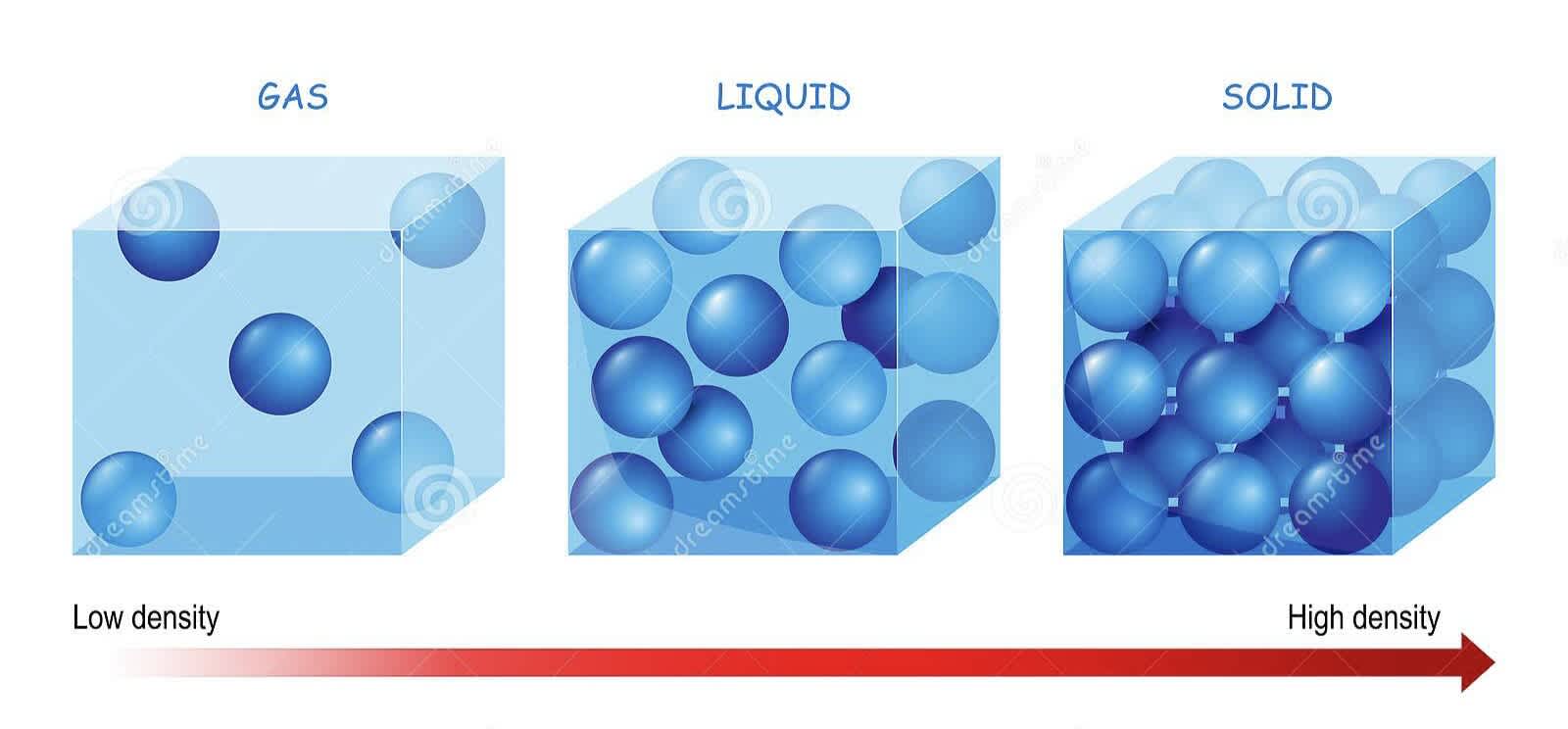
density and states of matter
In Sound: The speed of sound is fastest in solids than that of liquid or gas because the arrangement of molecules in solids is closely packed and is denser. Due to this, the particles can collide more quickly in solids than in any other media. Examples of solid media:- steel, plastic.
In Liquid: The speed of sound in liquid is faster than the speed of sound in the gas. This is because the packing efficiency of particles In liquid is much better than that of the gas. The arrangement of molecules is much denser in liquids. Example:-water.
In Gas: The speed of sound in a gas is the slowest due to loosely arranged particles. Gas is less densely packed. Example: Air.
There’s always an exception. In this case, it’s a vacuum.
What is a Vacuum?
A vacuum is a space that is empty of all substances including air or any gas. Vacuum is a condition in which there is no matter. For example: Inside a light bulb – there’s zero air inside an incandescent light bulb. Another well-known example of a vacuum is SPACE. Space is considered a vacuum because the pressure is very low or negligible in space than on planets. The pressure in space is so low that the particles do not support any process being carried out there.
Vacuum as a medium of Sound:
A vacuum is an empty space which means particles have no way to convey vibrations. Sound travels through the vibrations of molecules and atoms of a medium. But in a vacuum, there’s no air or any material medium through which a sound can travel. Therefore, sound cannot travel through a vacuum.
Electric Bell Vacuum Experiment:
We know that to hear the sound there has to be something for sound to travel through. Sound travels through solid, liquid, and gas. Sound has no way to travel through a vacuum. Let’s have a look at an activity to understand it.

electric bell and vacuum experiment
Take an electric bell and switch it on. Observe the volume of sound coming. Now, place the same electric bell in an airtight bell jar and then connect the jar with a vacuum pump. Pump out all the air inside the jar with the help of the vacuum pump. Switch on the electric bell. You will observe that there is no sound coming out. When air is removed from the jar, the sound no longer has a medium for the wave. This justifies that sound wave needs a material medium to travel through. It cannot travel through a vacuum.
If you want to explore more how sound behaves in different mediums read Why can't we hear sound in water?
Fun Facts about Sound:
Our ears do not stop hearing while we are sleeping, our brain just chooses to ignore the sounds.
The speed of sound in water is four times faster than the speed of sound in air.
The loudest natural sound on earth is caused by erupting volcano.
The speed of sound in air is 343 meters/second whereas the speed of sound in a vacuum is zero.
